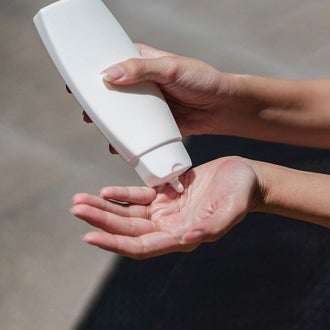I read that sunscreens contain endocrine disruptors. Are these chemicals dangerous to me and my family?"
There is no evidence of any chemicals approved for use in Australian sunscreens disrupting the endocrine system. The endocrine system consists of a number of glands, including the pituitary and thyroid glands, which secrete hormones into the body’s circulation to regulate a number of critical functions such as sleep, metabolism and reproduction.
“Endocrine disruptors” describes manmade chemicals that affect this system; exposure to them may result in hormone-related health problems such as obesity and infertility. Australian sunscreens are regulated by the Therapeutic Goods Administration (TGA), a government agency that ensures manufacturers use only active ingredients and formulas that are safe and effective. This includes monitoring the latest scientific evidence and adjusting the list of approved ingredients accordingly. Online campaigners based in the US and Europe have expressed concerns that sunscreen may contain endocrine disrupting chemicals, such as oxybenzone and octinoxate.
However, the TGA reported in 2001 that there was insufficient evidence to support the claim that chemicals in sunscreen interfere with the endocrine system in humans. Moreover, the endocrine disruption studies were based on the ingestion (swallowing) of the chemicals, rather than their application on the skin, which results in much lower absorption into the body. Cancer Council continue to monitor the evidence, but some Australians wish to make a personal decision to avoid certain ingredients, there are a variety of sunscreens in the market to choose from. When choosing a sunscreen it is important to find one you will enjoy using, that provides SPF30 or higher, broad-spectrum, water-resistant protection, and is TGA approved.
What about when it has passed the use-by date?
In Australia sunscreen products have use-by dates. A product that has passed its use-by date will not cause any harm, but will be less effective in protecting against sunburn, skin damage, and skin cancer.
Approximately two in three Australians will be diagnosed with skin cancer by the age of 70. The majority of skin cancers in Australia are caused by exposure to UV radiation in sunlight. Cancer Council Australia recommends a combination of sun protection measures to prevent skin cancer. This includes seeking shade when UV levels are high, and wearing sun-protective clothing, sunscreen, a hat and sunglasses.

